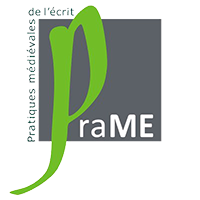Recreation of historical parchment manufacture
Changes occur as animal skins are transformed into parchment and affect its overall quality. Historical parchment manufacture was recreated and an histological study was conducted on processed sheep skins at the different steps of the manufacturing; before and after lime treatment, hair removal, and stretching. The results reveal surprisingly few histological changes in most steps in the production process. However, very visible changes in the supramolecular ordering of skin macromolecules (elastin, collagen) occur during the final stage of parchment production when stretched on the frame. We believe this study will help compensate for the lack of sources on microscopic changes in parchment during the recreation of its historical manufacture.
https://www.poledenamur.be/en/pergamenum/topics/parchment-fabrication-process
https://www.poledenamur.be/logo.png
Recreation of historical parchment manufacture
Changes occur as animal skins are transformed into parchment and affect its overall quality. Historical parchment manufacture was recreated and an histological study was conducted on processed sheep skins at the different steps of the manufacturing; before and after lime treatment, hair removal, and stretching. The results reveal surprisingly few histological changes in most steps in the production process. However, very visible changes in the supramolecular ordering of skin macromolecules (elastin, collagen) occur during the final stage of parchment production when stretched on the frame. We believe this study will help compensate for the lack of sources on microscopic changes in parchment during the recreation of its historical manufacture.
The skins from four lambs (Ovis aries) were taken from the Ovine Center of the University of Namur (natural deaths*). Parchments were fabricated by Marc Fourneau according to historical recipes and the transformation of the animal skin was studied by histological analysis at the different stages of the manufacturing process. More details can be found in the article entitled "Histological study of sheep skin transformation during the recreation of historical parchment manufacture" (see Publications).
* The animals were cared for according to procedures conforming to the European requirements on farm animals (EC directive 86/609).





